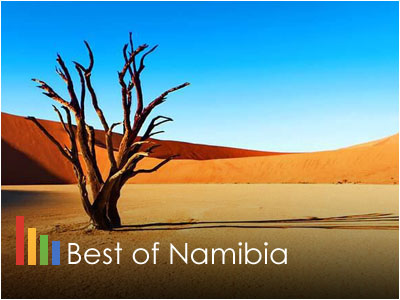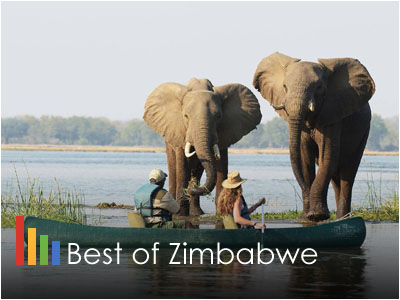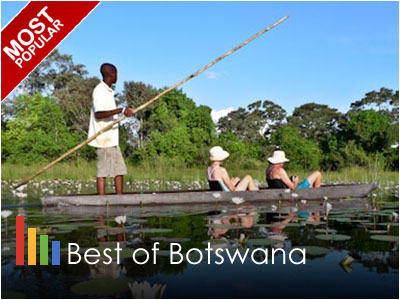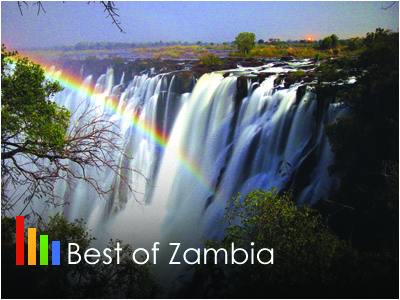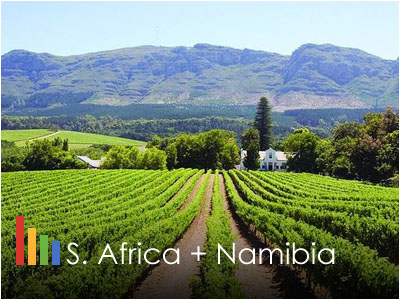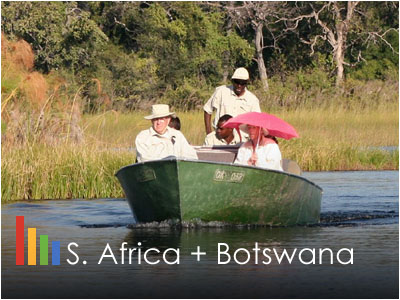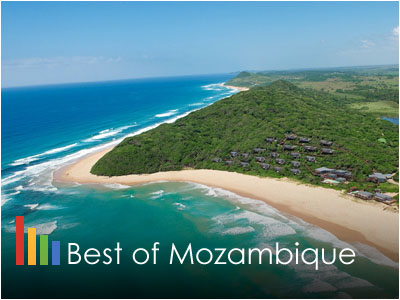Destination Mozambique, Africa
Mozambique - a paradise for beach lovers
Mozambique is not only a culturally rich country, but it is also geographically blessed. The climate of the country is the reason for the flourishing flora and fauna. The plethora of unusual places to visit in Mozambique will blow your mind. Mozambique beckons with its coastline and swaying palms, its traditions, its cultures, its vibe and its opportunities for adventure. This enigmatic southeast African country is well off most travellers' maps, but it has much to offer those who venture here: long, dune-fringed beaches, turquoise waters abounding in shoals of colourful fish, well-preserved corals, remote archipelagos in the north, pounding surf in the south and graceful dhows with billowing sails. Add to this colonial-style architecture, pulsating nightlife, a fascinating cultural mix and vast tracts of bush. Discovering these attractions is not always easy, but it is unfailingly rewarding. Bring along patience, a tolerance for long bus rides, some travel savvy and a sense of adventure, and jump in for the journey of a lifetime.
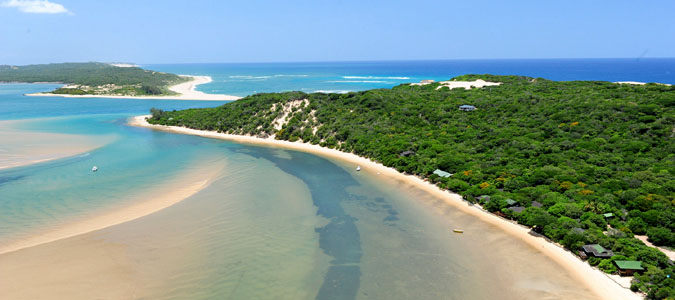
Mozambique - Basic Facts
Mozambique, officially the Republic of Mozambique is a country located in Southeast Africa bordered by the Indian Ocean to the east, Tanzania to the north, Malawi and Zambia to the northwest, Zimbabwe to the west, and Swaziland and South Africa to the southwest. The sovereign state is separated from the Comoros, Mayotte and Madagascar by the Mozambique Channel to the east. The capital and largest city of Mozambique is Maputo. Mozambique is endowed with rich and extensive natural resources. The tourism sector is expanding and visitor numbers on the increase due to its unexploited tourism attraction. There are known to be 740 bird species in Mozambique, including 20 globally threatened species and two introduced species, and over 200 mammal species endemic to Mozambique, including the critically endangered Selous' zebra, Vincent's bush squirrel and 13 other endangered or vulnerable species. Protected areas of Mozambique include thirteen forest reserves, seven national parks, six nature reserves, three frontier conservation areas and three wildlife or game reserves.
More About Mozambique
Mozambique is a country in Africa, which is rich in African cultural heritage and it reflects in its food, music, and art. Mozambique generally has a warm tropical climate which suits all tourists. Dotted with beaches, marine parks, the ruins from colonial-era, and fresh seafood, this South African nation is an absolute delight to visit. This scenic country has an extensive coastline and gorgeous white sand beaches that make it a paradise for beach lovers and peace-seekers.
Mozambique's rejuvenated capital city Maputo is set in the far south of the country and is best known for its colourful markets and thriving nightlife. It's also the best place to enjoy the country's signature dish: a plate of sizzling peri-peri prawns washed down with ice-cold Laurentina beer. That said, if it’s a beach holiday you’re after then we recommend that you don’t linger long in this bustling city but head further north to the long mainland beaches or the islands of the dazzling Bazaruto or Quirimbas Archipelagos. Here is our pick of Top 10 most popular destinations in Mozambique;
Bazaruto Archipelago
There’s nothing quite like the Bazaruto Archipelago. A speckling of elongated isles in the Indian Ocean, they are a patchwork of shimmering, aquamarine seas and coral gardens, windblown sand dunes and ochre-hued coastal hills that come peppered with scrub and swaying coconut palm groves. The largest island of the area (called, simply, just Bazaruto) is a place of open sandy bays patrolled by galumphing dugong, while the inland is carved through by karst hills and boulder stones. A little to the south and you’ll find the paradisiacal reaches of the Ilha de Benguerra, where luxurious honeymoon hotels poke above the white sands in a medley of swinging hammocks and sunning decks. In addition, one of the most famous Mozambique holiday destinations, Bazaruto National Park is for swimming and snorkeling. Why not go out into the sea world, see various species of fishes and even dugong. The people who are not interested in water sports can go for a boat trip and see different Islands. It is a great place to explore the sea life. Located in the protected area of Inhambane Province of Mozambique, the beauty of this place is extraordinary and jaw-dropping. It is one of the most recommended places to visit in Mozambique. Location: Inhambane Province, Mozambique.
Maputo Capital City
Mozambique’s handsome capital is a lesson in all things colonial. It was raised to the place of first city after the Portuguese drained the surrounding swampland. Then it was just a case of building the grand, imperial likes of the railway station, the pretty Casa do Ferro (courtesy of one Gustav Eiffel no less!) and rings of wide boulevards peppered with palm trees a la the Algarve – bingo you’ve got yourself a small enclave of Europe in Africa! However, Maputo has long been reclaimed by the locals here, and today the town is known for its enthralling bazaars that pulse with chatter and burst with East African batik, its raucous hip hop bars, and that mouthwatering fusion of Keralan and Arabic foods in the eateries! Do not forget to stop by Maputo Elephant Reserve. But its not only elephants, this place also has zebras, hippopotamus, crocodiles, giraffes and several other wild animals. There are many beautiful lakes in the region. The magnificent scenario along with the rich flora and fauna is the reason why this place is a must-visit.
Benguerra Islands
Benguerra Island in Mozambique is the 2nd largest island in the Bazaruto Archipelago, which broke away from the mainland thousands of years ago. The island is approximately 55 square kilometers, and lies 14 km offshore. Benguerra Island is the second largest among the four main islands that comprise the Bazaruto Archipelago. It is popular for snorkeling, rich marine life, fishing, horseback riding, posh resorts and pristine beaches with white sand. As a result of accommodating more than 140 species of birds, in 1971, this island was also turned into a National Park. The three lakes situated in the Benguerra Island are populated by freshwater crocodiles..
The Quirimbas National Park
The Quirimbas National Park is the great natural jewel of Cabo Delgado Province. It spills down from Mozambique’s northern mountain plateaux and into the waters of the Indian Ocean. Along the way there are great swathes of montane forests, savannah plains and endless mangroves, not to mention some sparkling coral reefs ringing the shoreline where the reserve extends into the sea. The unique duo of inland and coastal habitats makes Quirimbas a great place to come and spot the likes of African leopards, elephant herds, and crocs, all in the same day as seeing the large dugong and schools of multi-coloured fish from the tropics!
The Vilankulos
Vilankulo is worth a mention if only as the gateway to the aforementioned beauties of the Bazaruto Archipelago. But not only for that either, and if you come here to linger a little before hopping aboard one of the bobbing dhows that wait on the shore, then you’re in for a laid-back treat. Yep, this chilled seaside spot is also home to a clutch of its own campsites and leaning bamboo shacks, a lively local marketplace and beer bars. Add to that a smattering of deserted Indian Ocean beaches close to the town, where the horizon melds from golden yellow sand to cobalt-skies, and it’s easy to see why Vilankulo’s on the up!
Inhambane
Long ago, Inhambane attracted traders form across the Indian Ocean and the Arabian Sea. Spices, silks and other exotic goods would drift into its wide bay on the southern reaches of modern day Mozambique, only to drift out again laden with coveted East African goods. Later, the bustling mercantile town and its favourable natural harbour became a favourite of the Portuguese explorer Vasco da Gama, and those who followed made sure that Inhambane flourished under colonial rule. That means there are plenty of charming baroque builds lining the streets, along with some great museums and a cemetery that could easily be plucked from the hills of Lisbon. Oh yea, and Tofo – that picture-perfect beach resort – is also nearby!
The Island of Mozambique
Believe it or not, this tiny speck of land that languishes out in the shimmering waters of the Indian Ocean was once the very epicentre of Portuguese East Africa. Raised to greatness by the European traders and merchants that came its way around the cape, it became an important hub for commerce and admin during the 16th century. Consequently, there’s now a clutch of interesting colonial builds, like the old town fortifications, a charming whitewashed hospital and the Church of Santo António. Mozambique’s own character pops up too, with the thatched town of Makuti and the gorgeous tropical beaches. The whole place is now also a UNESCO World Heritage Site – not to be missed!
Gorongosa National Park
Marking the deep southern reaches of the East African Rift Valley, the dry and dusty landscapes of the Gorongosa National Park occupy the very heart of Mozambique. In fact, the rolling savannah and grassy hills here have been a designated reserve since the days of Portuguese rule, when they were a private game reserve for the colonial luminaries of the day. In the 60s the spot was converted into a fully-fledged national park, and now it’s hailed as perhaps the finest safari destination in the country. Head here to seek out bouncing bushbuck, elephant herds, waterbucks, crowned cranes, wild warthogs and more!
Lake Cahora Bassa
The vast lake waters of Cahora Bassa extend all the way from the Zambia border to the very heart of Tete Province in western Mozambique. Covering a whopping 2,700 square kilometers in total, they represent one of the largest freshwater lake systems in all of Africa. At one end stands the colossal Cahora Bassa Dam – a massive wall of concrete and steel that clocks up 171 meters in height and 303 meters in width: definitely worth the journey if you like your breathtaking engineering projects! And all around the banks of the reservoir there are now interesting fishing lodges and a smattering of houseboats, not to mention the occasional baroque church in testimony to the erstwhile Portuguese presence.
The Limpopo National Park
The Limpopo National Park has all the fascinating biodiversity and landscapes you’d expect of a protected reserve that’s contiguous with the legendary Kruger National Park of South Africa. Feathering out from the bends of the Limpopo River, it’s home to some of the most coveted of African game, which all now roams freely across the border thanks to some ahead-of-their-time international agreements on conservation. Safaris are – of course – the main draw and countless tourists come in to hit the grassy plains by 4X4 to seek out lions, elephants, waterbuck et al. For more information regarding Mozambique Holiday Travel ideas, DO NOT hesitate to Contact Us.
AfriChoice operates a wide range of carefully designed tours and safaris to Mozambique by providing transport and booking a hotel for you. Our safari consultants will always be at your assistance should you need a tailor-made holiday to this unique destination. NB: For more information regarding Mozambique, DO NOT hesitate to Contact Us.
Contact Us for more information:
Our Top Southern Africa Trips
-
Best of South Africa
South Africa's Best Spots
-
Best of Namibia Safari
Explore Namib Desert & More!
-
Best of Zimbabwe Safari
Explore Mana Pools and Beyond
-
Best of Botswana Safari
Discover Okavango Delta & Beyond
-
Best of Zambia Safari
Discover Zambia's Secrets
-
S. Africa & Namibia
From Winelands to Namib Desert
-
South Africa & Botswana
From Kruger to Okavango Delta
-
Mozambique Private Locations
Mozambique's Hidden Spots
Other POPULAR Safari Destinations! Explore Our Safari Destinations - EAST AFRICA and BEYOND!
-

Kenya
KENYA - Traditionally known as the true home of African Safari & Beach Holidays. -

Tanzania
TANZANIA - The land of Kilimanjaro, Serengeti National Park and Zanzibar Islands. -

Uganda
UGANDA - Popular for the Gorilla Tracking Adventures and the source of River Nile. -
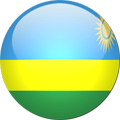
Rwanda
RWANDA - Emerging safari destination also know for it Mountain Gorillas and more. 
Indian Ocean
AFRICAN BEACHES - Know for its Turquise Blue waters and the pristine sandy beaches.-

Others
OTHER DESTINATIONS - We also offer trips to holidays to other African countries of interest.



 Paul Kitching - UK
Paul Kitching - UK Karen Howard - CANADA
Karen Howard - CANADA



